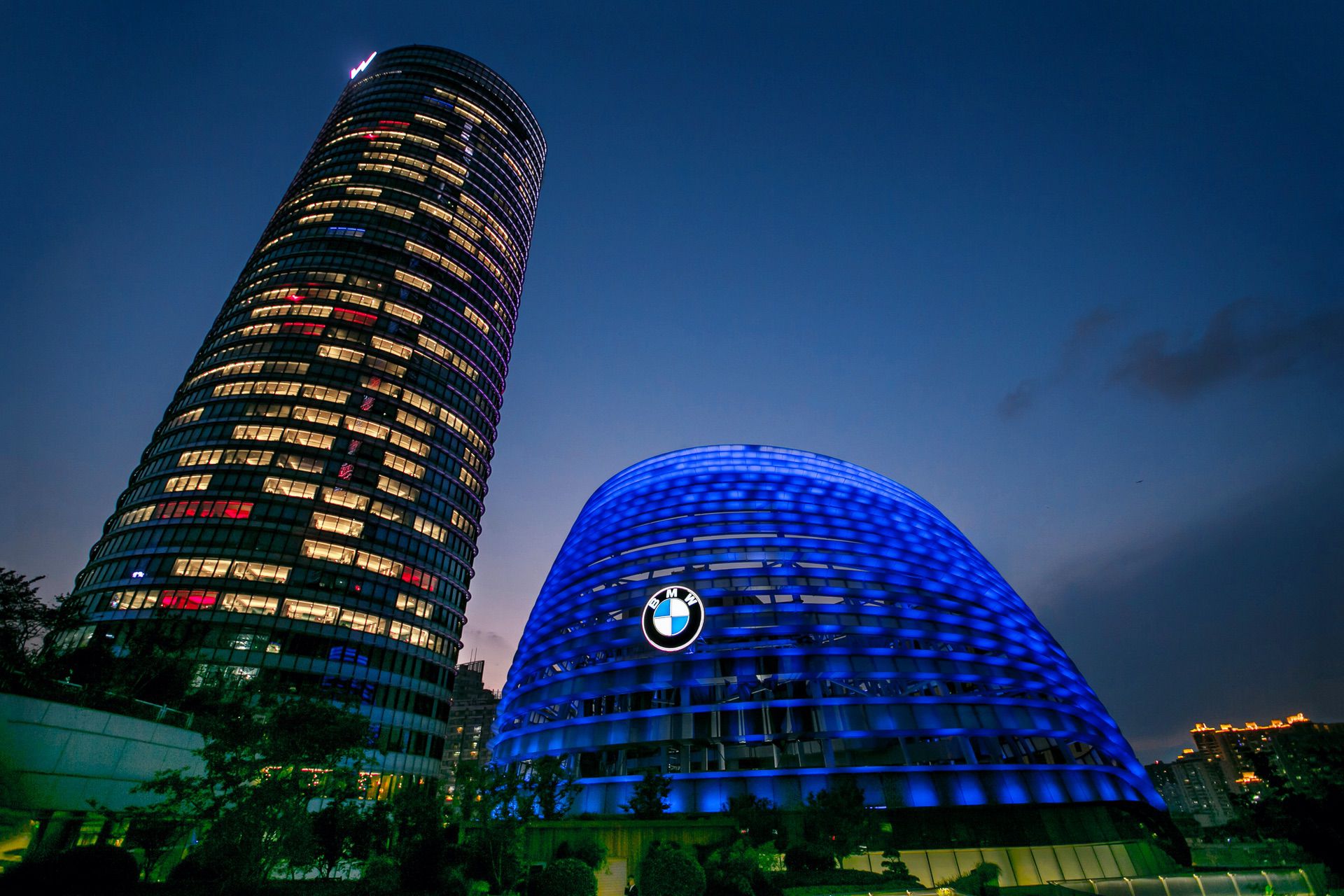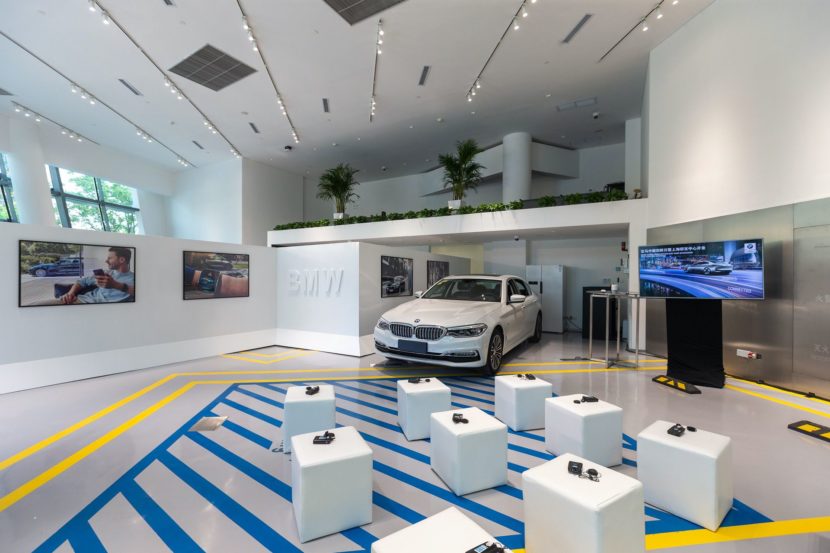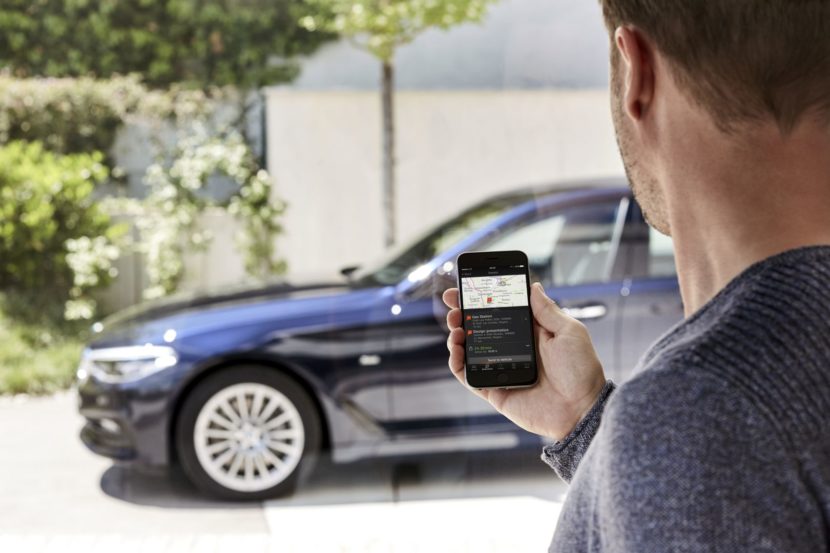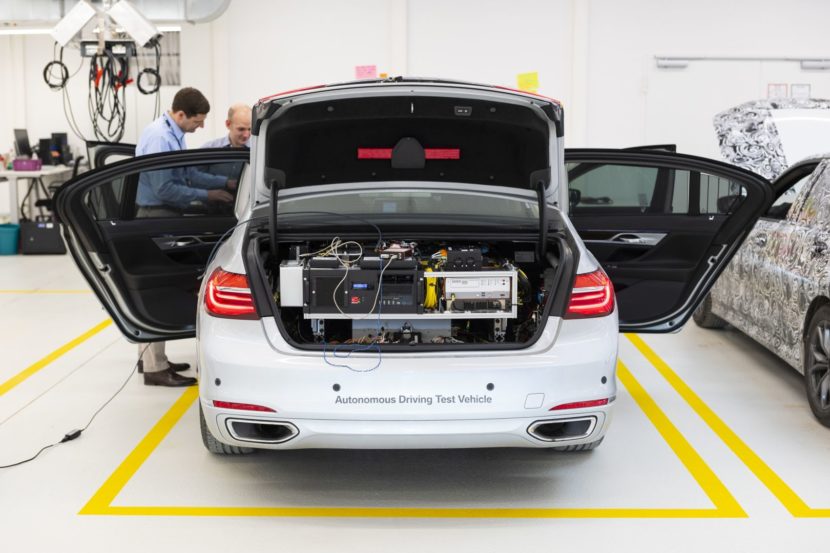To show its commitment to the Chinese market and to harvest local talent, in 2018, BMW has opened its first Shanghai R&D Center. With the establishment of R&D centers in Beijing, Shanghai and Shenyang, the Chinese R&D network is by far the biggest presence of BMW R&D outside Germany.
In an even hosted by BMW Group as part of the Shanghai Auto Show activities, BMWBLOG was invited to participate in a series of workshops at the new R&D Center which focuses on autonomous driving, digital services and design, while collaborating with high-tech companies from China.
Workshop 1: Technology Office Shanghai
The location of the BMW Tech Office is nearly steps away from the famous Shanghai attraction – The Bund – in an area surrounded by million dollar properties and swanky hotels. According to Dr. Martin Sautter, Head of R&D BMW Group China, the location has been on BMW’s list for a while, due to its convenience for employees working in the city and also as a way to attract local talent.
It covers over 2,500 square meters and features an open and flexible working environment for over 200 employees, out of the 1,000 employee at BMW R&D Centers in China. More than 90 percent of the employees in the Shanghai office are Chinese. According to Peter Riedl, VP of BMW Group Tech Office China, the employees come from diverse scientific backgrounds: big data, robotics, AI, human machine interface, mechanical engineering, business model development and economics.
Furthermore, the technology and lessons learned in the Shanghai office are shared with the other BMW R&D Departments around the world.
Open Innovation
“We are the spearhead of innovation in China, with a focus in three areas – BMW Open Innovation China, Megacity mobility and Customer Car Data Analytics China,” says Riedl. The Open Innovation Network aims at building an innovation ecosystem in China. This network covers Beijing, Shanghai, Hangzhou, Shenzhen and Hong Kong, and conducts joint research projects with partners such as universities, start-ups and technology companies.
Riedl says that the idea behind the network is to gain access to cutting edge tech and innovation programs in China, exploring potential cooperation with current and future innovation partners, and eventually, transferring promising innovation into BMW R&D ecosystem through innovation cooperation.
The BMW Tech Office in Shanghai is often engaging local startups, but at the time, there is no venture capital arm directly from BMW. Instead, the Chinese office works with Venture Capital firms and Government platforms to offer support to these innovative startups. They are also engaged with Incubators and Accelerators, universities or innovation departments within other companies to explore future partnerships and business opportunities.
Riedl told us that there are over 200 participants in the Open Innovation Network, over 300 startups are on the observation list and there are currently more than 16 innovation cooperation projects. Throughout the year, BMW Tech Office Shanghai holds several tech events which eventually lead to a grand event – the BMW China Startup Innovation Day in Shanghai.
Some examples of partnerships include AR Head-up Display (augmented reality) and a WeChat-based chatbot for ride hailing.
Megacity Mobility China
The second pillar of the BMW Tech Office Shanghai revolves around the topic of megacity mobility. Riedl says that his office aims develop a deep understanding of Chinese urban context as the global incubator for mobility innovations. They develop a technology roadmap focusing on core topics, such as electric cars, on-demand mobility, highly-automated driving cars and fully-automated driving cars, while continuing to develop ideas and concepts for products and services for the BMW Group past 2025.
“How do we play an active role in the mobility in China?,” is the question often Riedl asks his team. He mentions different forms of mobility expected by 2030, like e-scotters which will become the new mainstream within cities for short middle distance. While 80 percent of the US still owns a car, other parts of the world are quicker to adapt shared mobility and alternative means of transportation.
“Chinese will become smart, intermodal mobility patterns will be on the rise,” Riedl told us. “There will be a change from private car to car sharing in some parts of the city, based on regulations.”
An On-Demand Mobility Chart for 2018 shows 12 billion kilometers being recorded in Germany, 146 billion km in the US and a stunning 406 billion kilometers in China.
The profile of a Chinese on-demand mobility customer is also different and Riedl’s team put together a set of recommendations for such services – for example, a person to open the door for you or a cocoon inside your car.
Another important topic within the BMW Tech Office Shanghai is the “Smart City”, a national Chinese project. BMW’s job is to understand their role in a Smart City and help the Chinese government with mobility ideas. Launched in 2016, the Hangzhou “City Brain” project was created by Alibaba, and uses cameras systems and sensors across the city to collect data on road conditions in real-time.
An AI hub gathers all the data and manages traffic signals at hundreds of intersection, helping city workers make informed decisions. The City Brain, the name for the AI system, is said to have cut travel times on highways by 4.6 minutes for commuters and emergency vehicles.
Customer Car Data Analytics
BMW’s focus in China spans across multiple regions, not just Shanghai. For example, in different regions in China, the BMW Tech Office works with Chinese customers to equip their cars with data loggers. “The goal is to get a better understanding of Chinese customers real driving behavior,” Riedl explains. “A data logger sends the customer data goes over LTE then into cloud and eventually at the BMW Tech Office.”
Riedl further explains that the data logger monitors several different behaviors and situations, like steering inputs and road conditions, usage of the DSC system, brakes, fog lights and headlights, infotainment system, but also more practical things like storage inside the car, use of doors and seats adjustments, gearbox operation, and even windshield wipers operation.
The data recoded is used to optimize the car for Chinese customers, from the electronics to powertrain, body and chassis. Riedl gives an example how lateral accelerations might be different for China customers when compared to those in Germany, or how Chinese customers are opening the trunk (key, hand or kick leg).
Workshop 2: Connectivity and Digital Services
Next up was Joseph Zheng, the Head of User Interfaces and User Experience at the BMW Tech Office Shanghai. The Connected Services Portfolio is essentially the same for Chinese customers as it is for the rest of the world, revolving around three key issues – My Car, My Life and My Journey. All these items are grouped inside the BMW Connected Drive system which now equips all the new BMW models.
The cross-platform, personalized services associated with BMW Connected are made possible by the Open Mobility Cloud. The flexible architecture centers everything around the BMW ID, a vehicle-independent profile that the user carries with them at all times on their device, allowing them to transfer it to any BMW.
The Open Mobility Cloud also offers capabilities such as machine learning and data analysis, which are needed for all the customized features of a customer.
Zheng says that there are 4.5 million BMW Connected Users, in 32 BMW Connected Markets with 25 Billion interaction events and a staggering 12 million Connected Cars. The discrepancy in the number of Connecter Users and Connected Cars comes from customers who have yet to create a Connected profile.
The BMW Tech Office in Shanghai works with Chinese tech giants, like Baidu, Alibaba and Tencent, to integrate with different services they offer. For example, the Tmall Genie is an artificial intelligence personal assistant created by Alibaba A.I. Labs. In 2018, BMW and MINI owners began using their Connected apps to sync them with Tmall Genie just like it is the case with Alexa or Google Home.
Another integration with a tech partner – like Tencent – revolves around smart parking spaces. For example, in China, certain parking spaces have cameras that scan license plate so you get charged when you leave.
Yet, there are two other Connected features that really stand out in China. One of them is the Pickup Service – a valet service that will pick up your car when it needs servicing, and then delivers it back to you. Another smart integration between your car, the Connected app and the city revolves around traffic violations. If you get a traffic violation, like an illegal turn on red, a push notification will alert you of that and the app/car will even allow you to pay that fine.
Workshop 3: Autonomous Driving
Dr. Robert Bruckmeier is the VP of Connected & Automated Driving Lab in Shanghai, and our host for the next workshop. Autonomous Driving is one of the four pillars at BMW Group- ACES – which stands for Automated, Connected, Electrified, and Services. China is also seen as one of the biggest markets for future autonomous driving, so it comes as no surprise that BMW is heavily invested here.
Around 80 engineers in China are working on the core technologies behind autonomous driving – such as high-definition maps, sensors and perception, driving strategy and vehicle control, interfaces with on-demand mobility services and prototypes – as well as regulatory issues.
In China, BMW has been working on the development of autonomous driving since 2014. In May 2018, BMW became the first international OEM to obtain an autonomous driving road testing license in China. In Shanghai, BMW Group actually got the so-called Shanghai Intelligent Connected Autonomous Driving Test License.
BMW says that if most of the use cases work in China, then it’s likely to work in most places in the world. In 2017, BMW started Level 4 autonomous driving trials with a fleet of 40 test vehicles on roads around the world, and the number of test vehicles increased to 80 in 2018.
The test sites in Shanghai currently cover a total length of about 5.6 kilometers and are planned to grow quickly over time.
Road safety is the top priority for BMW when it comes to autonomous driving, so the company plans to complete 200 million kilometers (125 million miles) of testing globally prior to the mass production of autonomous vehicles. The engineers here are working on Level 3-5 technologies. The overall goal of the Chinese car market is 10 percent Level 3 systems by 2020.
The data gathered during the millions of autonomous driving kilometers will be used to train machine learning algorithms performing adequate L4 Autonomous Driving behavior. A 7 Series displayed for us showcased some of the tech used in the car, from 5 LIDARS to laser scanners, long and short range radars, rear facing cameras, GPS antenna, trip focal camera, front side camera, 360 surround view camera and 360 ultra sound coverage.
All the cars goes through extensive test and validation use cases, and extensive driver training is provided for safety drivers.
In the next few yeas, as the world prepares for self-driving cars, BMW’s autonomous driving efforts in China, and especially in Shanghai, are expected to increase.
Workshop 4: Designworks
In 2012, BMW opened a new design studio in Shanghai providing full-service design solutions to its clients across Asia and globally. According to Harry Sze, Creative Director Designworks, the studio has experienced significant growth across a variety of industries, including consumer electronics, home appliances, aviation, rail and premium automotive.
Some of the Designworks’ clients are John Deere, Cartier, HP, Singapore Airlines, Amgen, Coca Cola and Huawei. Sze says that the studio not only works on physical products or creative concepts, but also on user interfaces and user experience. One example given is the work done for Yuneec, a global Chinese electrical aircraft manufacturer, who approached Designworks with the challenge to create the future of drone flight.
The team in Shanghai not only designed the physical drone, but also developed the user experience and interaction concept for the drone’s app. This includes a user interface that enables training, flight path planning, and control of the drone via a smart watch or phone.
On the automotive side, the design team competes globally for all BMW future productions cars and concepts, with one example being the 2015 BMW Concept Compact Sedan, a car that resembles the future 2 Series Gran Coupe.
The knowledge gathered by the team in the Shanghai office – which sometimes is specific to the Chinese market – is shared with the other design teams in Munich or Los Angeles, helping to tailor future design projects and foreseeing the future opportunities of the market.
The three hour tour now comes to an end and if there is a major lesson to be learned from it, is that BMW is fully committed to the Chinese market. With ongoing upgrades to its R&D network in China, the Bavarians are well positioned for an innovative mobility future and transforming themselves into a tech services company.









































































